Poe, Lovecraft, & Magick
Do you remember your first introduction to the works of Edgar Allan Poe? I do. It was watching the low budget films by Roger Corman that usually starred Vincent Price. They weren’t very good, but the use of color and lighting was very effective at being scary. Although I was a kid, I knew that books were usually better than the movies made from them, so I sought out the originals. Beside, I’d always heard that Poe’s stories were scary.
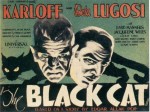 So I read them, looking for the scare factor. I found them to be…boring. I went back to the movies and found one that is really great, The Black Cat, a 1934 film starring Bela Lugosi and Boris Karloff. Sure, the bizarre, sets were discomforting and the plot was filled with obsession, implied forbidden sexual and occult practices (the main bad guy may have been modeled on Aleister Crowley) and a horrifying climax that is only shown in shadow. But it was the concepts and beliefs that were the basis of the film that really got me.
So I read them, looking for the scare factor. I found them to be…boring. I went back to the movies and found one that is really great, The Black Cat, a 1934 film starring Bela Lugosi and Boris Karloff. Sure, the bizarre, sets were discomforting and the plot was filled with obsession, implied forbidden sexual and occult practices (the main bad guy may have been modeled on Aleister Crowley) and a horrifying climax that is only shown in shadow. But it was the concepts and beliefs that were the basis of the film that really got me.
Years later, the guitarist in a band I was in told me that if I like horror stories, I needed to read some of H.P. Lovecraft. I eventually read all of his stories and his one novella. He was that good. How good?
With Poe, after I read his stories, I was left saying to myself, “That was a scary story.” With Lovecraft, after reading a story, I was left saying to myself, “Turn on the lights. Make the coffee. I am not going to sleep tonight!”
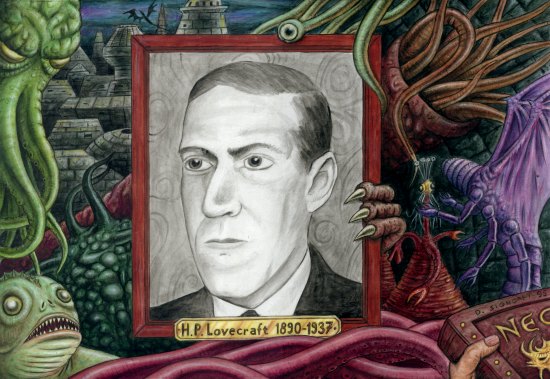 H.P. Lovecraft
H.P. Lovecraft
Illustration by Dominique Signoret
Howard Phillips Lovecraft (1890–1937) wrote pulp fiction, so called because it appeared in magazines made on cheap paper known as “pulp.” Perhaps the turning point in his career was in 1928 with the publication of a story, “The Call of Cthulhu.” It was the fourth in a series of stories that had a common background of horrendous beings and gods who once controlled the Earth and who now want it back. Most of the stories had a similar plot: a man begins investigation into something strange, discovers these other dimensions and beings, and either barely survives them or dies preventing their return.
Frankly, I find his writing style to be terrible and bloated. But it creates an amazing mood, leading you to wonder whether or not something actually exists, something horrible and terrifying beyond description, just beyond our physical world. It’s the concepts and ideas that are more frightening than anything.
Lovecraft was part of a circle of some of the greatest fantasy writers of the time. They liked the concepts and wrote stories using the same background, known as the “Cthulhu Mythos.” They also played tricks on each other. Lovecraft called one of his demons “Klarkash-Ton” in honor of Clark Ashton Smith. Lovecraft was also a ghost writer, even writing a story, “Imprisoned with the Pharaohs,” attributed to Houdini.
If you’re interested in Lovecraft, a movie, “Lovecraft: Fear of the Unknown,” is available for free on the internet. Use this LINK to access it.
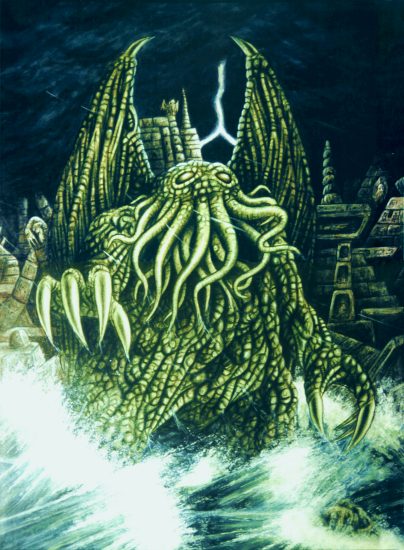 Cthulhu and the city of R’lyeh
Cthulhu and the city of R’lyeh
Illustration by Dominique Signoret
Lovecraft used elements of the Mythos in many of his stories, including some he ghost wrote. The other authors in his circle such as Robert E. Howard (famed for Conan), Robert Bloch (author of Psycho, the book that was the source for Hitchcock’s famous movie), and August Derleth used elements from the Mythos in some of their stories, too. Without knowing that these authors knew each other and were using this common background on purpose, and seeing the same concepts in differing places by different authors, many people began to wonder, “Could this possibly be true?” They started looking for evidence of its reality.
One of the most common links found in many stories was a fictional book of dead names, the Necronomicon. For years, dealers in antique books were asked for this tome. And when there’s a need, someone always comes up to fill that need.
Lo, The Necronomicon Appears
Several people made fake versions of this book. Perhaps the most famous version was published in 1973 with an introduction by L. Sprague de Camp. Another version had a few pages appear in a magazine. It was written in what was supposedly Arabic and included a translation. Someone noted that the pages of the original text were all the same.
In 1978, a version of the Necronomicon by George Hay (with an introduction by Colin Wilson) appeared. At the time, Llewellyn was publishing what was arguably the best occult magazine in U.S. history, Gnostica (some say the great Gnosis was better, but I would say it was far more of an erudite journal than a popular magazine). Gnostica ran a long article on the Hay book, including a comment by Carl Llewellyn Weschcke that if any system was consistent, it could work as a magickal system. This concept was not widely believed at the time, and it was revolutionary. It was a direct precursor to the numerous magickal and Pagan systems that exist today and one of the reasons I believe Mr. Weschcke is justifiably called the Father of the New Age.
Also in the late 1970s, there appeared a version of the book by “Simon.” Originally a large hardbound book published by the Magickal Childe occult shop of New York (the owner, the late “Horrible” Herman Slater, gifted me with a copy), it came out from Avon as a cheap, mass market paperback. Suddenly, everyone had a copy and wanted to do magick using it. I often was asked questions about it, most often by people who had little or no experience with magick. I had a stock answer I sent back to people giving the facts about the book. In the second edition of Modern Magick (and republished in the new third edition) I wrote, “Frequently (in the stories, at least), the entities of the Cthulhu Mythos are uncontrollable and destroy (or attempt to destroy) those people who call them. Are you willing to chance that? Are you prepared to chance that?” Do see the book, The Necronomicon Files for the full story on this text.
Beyond the Fad
Most intelligent occultists were ignoring the Cthulhu Mythos and any of the Necronomicon versions as a source. But one, little-known author presented an alternative: What if there really were a sort of “astral” Necronomicon that Lovecraft had tapped into? Could his stories be just a blurred reflection of the reality? Kenneth Grant published his first book that broached this possibility in 1972. Most of his books now are rare or still very expensive. I believe more people talk about Grant’s ideas than have actually read them. However, a small group of dedicated occultists began experimenting with Grant’s actual concepts. Many, including Linda Falorio and her Shadow Tarot and Nema are moving Grant’s approach to new levels.
In 2004, Donald Tyson published a version of the Necronomicon. According to Wikipedia, “The Tyson Necronomicon is generally thought to be closer to Lovecraft’s vision than other published versions.” Tyson has also written other books on this system including a practical magick book, Grimoire of the Necronomicon.
Should You or Shouldn’t You?
The modern tradition of Chtulhu magick is a neomagickal tradition. I see no reason to dabble with it (especially using the Simon book) when other, far older traditions with much stronger egregores (Enochian and Solomonic, for example) are available. Plus, there’s that little thing of the entities of the Necronomicon wanting to rip you to shreds if you screw up in the slightest.
However, if you are interested, I would recommend working with either Grant’s or Tyson’s versions.
Coming back to the beginning of this post, it’s the concepts behind Lovecraft’s stories that make them interesting. Similarly, it is the concepts behind Grant’s and Tyson’s approach to magick that, in my opinion, are so important to the future of occultism and magick. They go back to Dion Fortune’s idea that there is no room for authority in occultism. Do your own research, including mystically and magickally, to find out what works for you.
UPDATE: I forgot to mention that many years ago, while I was attending UCLA, I wrote a story in the Cthulhu Mythos tradition. I have posted it for your reading pleasure HERE. Don’t read it alone…at night…



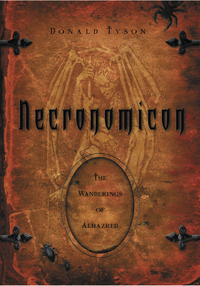
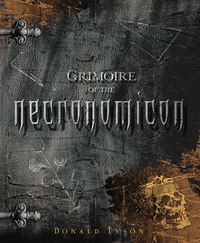








As a child I was fascinated by Poe. As a young adult, I loved to hate Lovecraft, but read his work obsessively (and secretly, as if it were a shameful vice, like literary junk-food.) Now that I’m considerably older and don’t give a damn what anyone thinks of what I read, I have to say that “The Dream Quest of Unknown Kadath” is one of my all time favorite fantasy novelettes ever written. It’s a ground-breaking work that inspired many later authors, and I often see echoes of it in other writings. In spite of Lovecraft’s less than appealing eccentricities, he was truly a pioneer for the entire broad spectrum genre of fantasy/horror/sci-fi/occult fiction, and we owe him a great deal of thanks for that.
I’ve often thought that many truths were contained in fiction, often unintentionally- and I do think that Lovecraft, Derleth, and many of their colleagues did in fact tap into something dark that lives in a dimension that is entirely too close to local space-time for comfort. For those who crave contact with Cthulhu type entities, I just have a couple of parting remarks- “Can you say Tentacle-lickin’ good?” and-
They’d probably really appreciate it if you rolled in seasoned breadcrumbs before you start.
It’s interesting to see your placement of the Necronomicon in a real magick tradition. I’ve never been much impressed by the Simon Necronomicon, which really just seems like much Sumerian mythology regurgitated, with nominally Lovecraftian elements mixed in.
I’m not a believer in supernatural Lovecraftian forces, but artists and practitioners who believe in powers behind his work should do their best to create tools that won’t embarrass themselves.
[…] This post was mentioned on Twitter by Dwight L. MacPherson and Dan W, Gretchen Morgan. Gretchen Morgan said: Poe, Lovecraft, & Magick via @LlewellynNews http://t.co/ucJw9T8 […]
[…] a tweet from Dwight McPherson, here’s an interesting article on Poe, Lovecraft & Magick. It is of the persuasion that Lovecraft was writing about real stuff, but if you can overlook that, […]
Respectfully, I suggest that you read the post again. I report that some people believe HPL was writing about real stuff. I point out that any consistent system can be used for magick. I don’t say that HPL was writing about real stuff.
Thanks,
Really thought provoking Article; and I really loved the Art! Primo Stuff. But I’ve always found HP misplaced in Horror my self. With the Execption of the Case of Charles Dexter Ward. I’ve never found his stuff “Scary” and I’ve read it all; (Twice).
I think of HP more in the Vein of Roger Zelazny, or Larry Niven, a writer of Speculative Fiction; but oh what mind bending, or mind opening speculations.
Blessings, BB.
Great article!
I actually went the other way around and started reading Lovecraft instead of Poe (well, I did have an early Poe encounter in my early school years). And still I hold Lovecraft for the better author, not because of his writing skill but for as you say the power to set such vivid mood settings.
My absolute favorite must be The Whisperer in Darkness (Coming as a film from HPL Historical Society this year for them who don’t know), it’s really building up a great atmosphere, and makes one expand the mind to grasp the ideas from the alien race that exploit the deep depths of the earth.
Anyway, thanks for a great article, and it’s nice to see a good summary of the Necronomicon editions, I’m a great fan of Tyson’s take on the Cthulhu mythos, and it’s great to find passages that’s real quotes from Lovecraft’s writing in there!
Cheers!
I would like to say thank you for this post; it was real. In the beginning, when my religion failed to provide answers, I began a move toward Pagan/Wicca ideas and practices. My first attraction was to this familiar darkness mentioned in your post, but I was relieved to find that the art of conjuring up some malevolent entity was not a mandatory skill for initiation into the craft. My question now is why would someone want to do such a thing? God bless us and everyone else? Right?